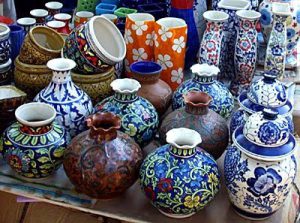India’s television network connects 900 million viewers across 230 million households nationwide.
918 private satellite channels operational as of March 2025 showcase a diverse and growing broadcast ecosystem.
6.5 crore DD Free Dish households support digital inclusion and free public access across India.
Introduction
World Television Day is celebrated worldwide on 21 November every year, following a resolution adopted by the United Nations General Assembly in 1996. The Day recognises television as a key medium for informing, educating, and shaping public opinion while promoting communication, cultural exchange, and international understanding. In India, the day is observed under the Ministry of Information and Broadcasting (MIB) and its public broadcasting network, Prasar Bharati. Various outreach programmes and broadcasts by Doordarshan and All India Radio highlight television’s enduring role in public service communication, development messages, and national integration.
Television remains one of the most powerful platforms for information, education, and entertainment in India, connecting millions across both urban and rural regions and contributing significantly to national awareness, governance, and social progress.
Did you know?
India’s Media & Entertainment sector contributed ₹2.5 trillion to the economy in 2024 and is projected to exceed ₹3 trillion by 2027. The broadcasting segment alone generated nearly ₹680 billion in 2024, driven by digital expansion, 4K broadcasting, Smart TVs, 5G, and OTT platforms serving more than 600 million users.
Growth of Television in India
The evolution of television in India began with experimental broadcasts and has grown into one of the world’s largest television networks. Guided by the Ministry of Information and Broadcasting, it reflects India’s advancement in communication technology and digital innovation.
Experimental and Foundational Phase (1959–1965)
Television broadcasting began on 15 September 1959 on an experimental basis by All India Radio in collaboration with UNESCO, focusing on education and community development. Programming initially centred around school learning, agriculture, and rural upliftment and was accessible only in a small radius around Delhi.
Expansion and Institutionalisation (1965–1982)
Regular daily broadcasts began in 1965, and Doordarshan was established as a dedicated television service. Television centres expanded to various major cities across India, building a stronger national broadcast infrastructure. The Satellite Instructional Television Experiment (SITE) in 1975–76 reached 2,400 villages across six states, marking a major milestone in satellite-based education and community development. Doordarshan broadened its role in public information, news, and educational programming, strengthening its footprint across regional languages.
Colour Television and National Coverage (1982–1990)
The introduction of colour television during the 1982 Asian Games transformed the viewing landscape. Rapid transmitter expansion enabled Doordarshan to reach nearly 70% of the population and 80% of the geographical area by 1990. Regional Doordarshan Kendras strengthened linguistic inclusivity and cultural representation.
Liberalisation and Satellite Era (1991–2011)
Economic reforms in the 1990s opened the television sector to private broadcasters. Channels like Star TV, Zee TV, and Sony revolutionised entertainment and news formats. Doordarshan continued strengthening nationwide public service broadcasting and launched DD Direct Plus in 2004, India’s first free-to-air DTH service, improving access for rural and remote regions.
Digitisation and Modern Broadcasting (2012–Present)
Government-led digitisation of cable TV from 2012 to 2017 enhanced signal quality and viewer choice. Prasar Bharati’s DD Free Dish has grown dramatically, now reaching over 6.5 crore households. With 918 private satellite channels operational, the television network remains the country’s most extensive mass communication platform.
Educational Initiatives and Digital Learning
Television continues to support inclusive learning, particularly through Doordarshan and DD Free Dish. During the COVID-19 pandemic, educational broadcasts ensured continuity for students without internet access. The PM e-Vidya programme launched 12 dedicated DTH channels for school education under the One Class One Channel initiative, integrating content with platforms such as SWAYAM, DIKSHA, and NCERT digital resources. SWAYAM Prabha 24×7 educational channels further support school, higher education, teacher training, and skill development.
Socio-Economic Impact and Inclusion
As of March 2025, 918 private satellite channels are licensed to operate in India, including 333 pay TV channels. Television supports thousands of jobs across content production, broadcasting, and distribution while supporting access to government schemes, healthcare, and education. It bridges divides between linguistic regions and strengthens cultural identity.
Technology and Innovation in Broadcasting
India is transitioning to Digital Terrestrial Television using DVB-T2 standards, improving picture quality, signal efficiency, and mobile reception. Nearly all analogue transmitters have been phased out except at around 50 strategic sites. DD Free Dish’s exponential growth from 59 channels in 2014 to 482 channels in 2025 continues to expand free broadcasting access nationwide. Regulatory reforms under the Telecommunications Act, 2023 are reshaping broadcasting frameworks to support convergence between TV, OTT, and digital ecosystems.
Conclusion
India’s television ecosystem has entered a transformative digital era powered by innovation, high-definition broadcasting, satellite expansion, and multilingual content accessibility. From its modest start in 1959 to serving 900 million viewers today, television remains a crucial pillar of national communication, development outreach, education, cultural expression, and democratic engagement. It continues to evolve as a participatory medium connecting and empowering India’s diverse population.






